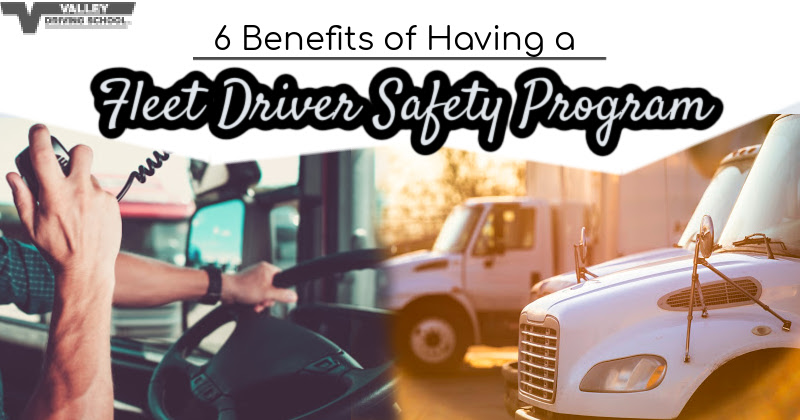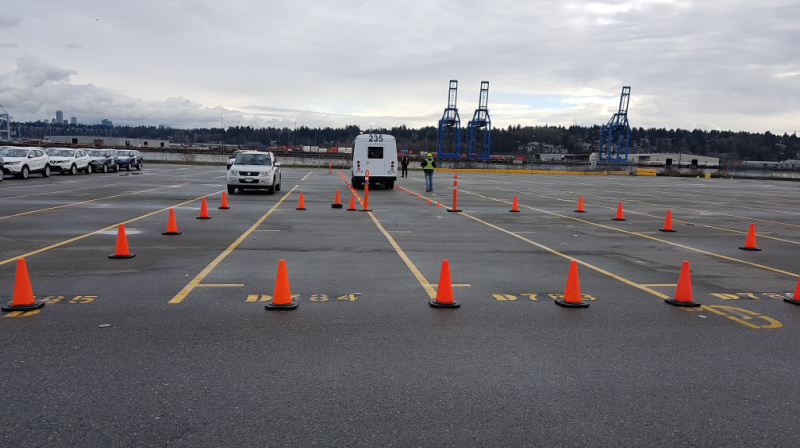Do you know where all your fleet vehicles are right now? Do you know which training programs each one of your fleet drivers have completed? If you’ve answered “no” to either of those questions, this article is for you.
In this week’s blog post, we’ll be taking a look at how you, as an employer, can build and improve your own fleet driver safety program.

Driver Training for Employees
Having unsafe and improperly trained fleet drivers can be an expensive cost to your business and can also lead to unexpected and dangerous consequences. When company drivers are given a custom-built training program that meets the company’s expectations and exceeds the company’s standards, those fleet drivers are safer, competent, and courteous while on the road. Having safe and competent drivers is beneficial to your business and the communities your drivers live and work in and helps to keep the roads a safer place to be. Creating a culture of safety will help you attract better drivers, and retain your best employees.
Poorly trained drivers can cost your business through wasted fuel, increased maintenance costs, and damage repairs. Improving your fleet drivers’ skills through proper safety training can help you keep more money within the company and increase efficiency, productivity and, eventually, you’ll be able to hire even more drivers to expand.
Your employees represent your business when they’re on the road. Make sure they’re putting their best driving foot forward when they’re operating a vehicle with your company decals visible. Here are our top six tips to help you improve your own fleet driver safety program within your business:
1. The Right Drivers
It’s important to start off with a good base - the drivers! Be sure that your organization has a standardized and thorough screening process for new drivers. What makes someone a benefit as a company driver? A positive attitude and courteous manner top the list and after that you should be looking for safe, experienced, and reliable candidates to interview, and include a driving evaluation as part of this process. Driving evaluations can be done in-house with a trained professional or outsourced to a reputable driving school.
2. Policies and Procedures

Once you have some drivers who have proven their driving skills, policies and procedures that are easily understood and easily accessible should be introduced. The policies and procedures will vary depending on exactly what kind of company you are and what role the company fleet plays within that. What is the policy surrounding vehicle dispatching - do drivers get to take vehicles home or should they be returned at the end of every shift? What about fueling procedures - is there a corporate fueling account or are employees expected to purchase fuel and get reimbursed? When you set clear and written expectations for your drivers, it’s easier for them to adhere to and easier for you to follow up when elements are missed.
2. Incident Reporting
Incident reporting is one of those things that should have it’s own policy and procedure! Encourage your fleet drivers to report accidents, no matter how small, and even near-misses. If drivers feel like they have a safe and understanding report procedure for incidents, they are more likely to come forward with anything that happens on the road. Turn these situations into learning opportunities instead of cause for termination or disciplinary action. If you are able to use accidents and near-misses as educational moments with your entire fleet team, you can help avoid future incidents and provide opportunities to improve safety.
3. Logbooks
You may hear “logbooks” and think those are just for long-haul truck drivers, but taking the time to keep logs isn’t just reserved for truckers. Think of fleet logs as the company’s trail for anything that happens with your drivers and vehicles. This sounds easy, but as your team grows, it becomes more likely that logs and reports will fall through the cracks. This can result in lost revenue through wasted fuel, vehicles that are unaccounted for, and not having the right vehicle available when you need it. Make sure you have an up-to-date contact list of everyone who drives for your company, which vehicle(s) they use and when, and whether or not they ever use their own personal vehicle when working on behalf of the company.
5. Vehicle Maintenance

Just like logging where your fleet vehicles are and who is using them, it’s important to have logs and expectations for vehicle maintenance. Some fleets will have one Fleet Supervisor that takes care of booking vehicle maintenance, to ensure preventative maintenance is done in a timely manner and vehicles aren’t missed. Whether it’s a Fleet Supervisor that takes care of maintenance or the drivers themselves, it’s important to have the expectations made ahead of time. It’s also important that drivers are aware of what their role is when it comes to reporting vehicle problems that need to be addressed. Drivers should be inspecting their fleet vehicles before every trip and be provided with an easy way of providing these inspections back to the company. Daily pre-trip and post-trip inspections will mean a less costly maintenance bill as issues are more likely to be caught before they become worse. Ensuring that you track vehicle maintenance schedules and stay on top of repairs will keep your fleet running smoothly for longer.
6. Driver Training

No matter how many drivers you have or how big your fleet is, professional training to make sure they all have the correct knowledge, skills, and attitude is an important part of any Fleet Safety Program. Just like interview evaluations, driver training can be done in-house with a trained professional or can be outsourced to a reputable driving school. Here at Valley Driving School, we provide efficient, cost-effective fleet driver training opportunities. Whether your fleet drivers need experience driving on various road and weather conditions, securing cargo loads, or maneuvering trailers or large vehicles, we offer both classroom and in-vehicle practical training.
--
Having a well-run, experienced, and safe fleet of drivers is easier than you think when you put a Fleet Safety Program into place. These tips should set you on the right path whether you have a single company car or have a fleet of fifty vehicles!
